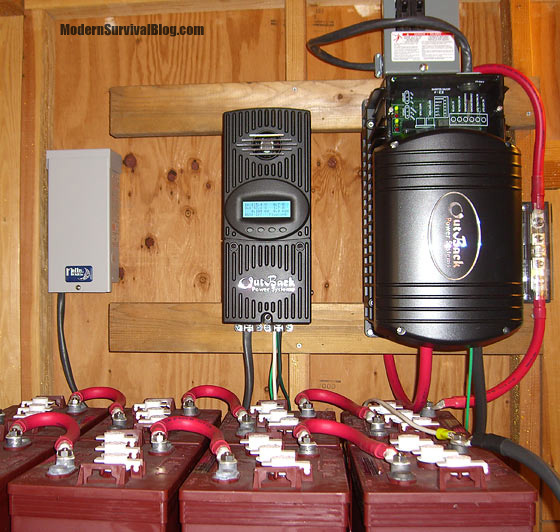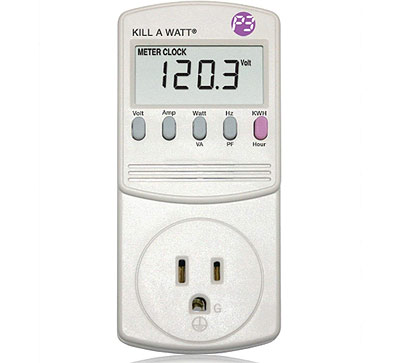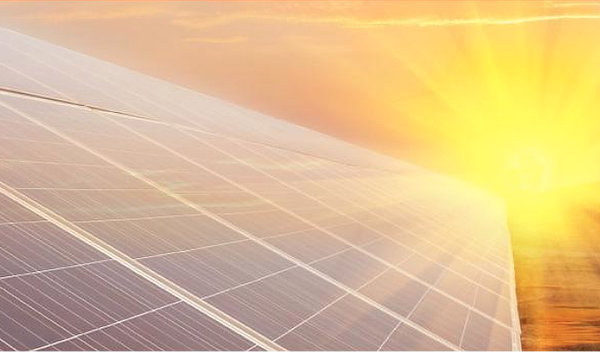The Four Essentials Of An Off Grid Solar Setup

An off grid solar setup. It’s an ideal prep that can partially or totally relinquish you from dependence upon other systems (the electrical power grid), which themselves are vulnerable to disruption or breakdown.
Off-grid systems also enable the ability to live away from the mainstream. This opens the door to properties that are away from public utility systems.
Even if living in suburbia, installing an off-grid system side-by-side with the existing electrical system could provide you with a completely separate electrical circuit (separate outlets, etc., however you design it – unless you ‘grid-tie’). It will reduce your dependency on the grid. It will provide a back-up means of electrical power during a grid outage or disaster situation.
Although there is much more to know regarding the proper design and construction of an off-grid solar power system, the following basic essential elements will give you a summary of the main components involved.
4 Essential Building Blocks – Off Grid Solar Setup
A typical off-grid system can be split up into four sections. Each with their own function and purpose as listed here.
1. Photovoltaic Solar Panels
2. Charge Controller
3. Battery Bank
4. DC to AC Inverter
“Even if you do not want to install your solar system yourself but you want to get it from a contractor it is a good idea to get this book. With this knowledge you will be able to understand the different types of components and installation requirements.”
If purchasing through my links, I may earn commission (no extra cost).
Affiliate Disclosure

PV PHOTOVOLTAIC SOLAR PANELS
The PV (PhotoVoltaic) solar panel is where it all begins. A typical solar panel is made up of an array of many small individual solar cells made of crystalline silicone. Each of these cells are connected together to provide a usable amount of total power. Sunlight (photons) strike the crystalline silicone wafers, which convert that energy into electricity.
Today’s typical residential solar panel may contain enough individual cells to produce hundreds of watts each (although there are lots of different sizes). The more solar panels, the more power you get. While a number of years ago solar panels cost about $4 per watt, nowadays the panels are commonly priced in the vicinity of $1/watt, more or less.
HOW MANY SOLAR PANELS FOR YOUR OFF GRID SOLAR SETUP
To calculate the number of solar panels required (which will vary widely depending on one’s needs,) it’s all about the term ‘watts’. A ‘watt’ is a unit of power.
First you need to determine the wattage of an individual appliance or device that you would like to power, and multiply it’s wattage by the number of hours per day that the appliance or device may be ‘on’. The result is a unit of energy which is required to power that device – power multiplied by time. You do this for each device and add them all up to get a total number.
For example,
You might want enough energy to run a refrigerator, a chest freezer, some lights.
[ Read: How To Measure Energy (kWh) Of A Single Device With A Power Meter ]
[ Read: Solar Power and Energy Requirements – How To Calculate Your Needs ]
Tip: Power is watts. Energy is Power x Time (watt-hours).
REFRIGERATOR
A refrigerator’s internal compressor will cycle on and off throughout the day. It may realistically be ‘running’ about half the time during any given day. If your refrigerator consumes 100 watts when it’s ‘on’, you would calculate the power consumption (over time) requirement as follows:
100 watts x 12 hours = 1,200 watt hours
This is a reasonable 24-hr daily presumption if cycling ‘on’ half the time.
( 1.2 kWh, or 1.2 kilowatt hours)
You can determine how many watts that your devices are consuming by temporarily plugging them into one of these meters:
‘KILL A WATT’ P3 P4460 Electricity Usage Monitor

I used that meter with my own refrigerator and over a 24 hour period it consumed 1,360 watt hours.
CHEST FREEZER
60 watts x 12 hours = 720 watt hours
This is a reasonable 24-hr daily presumption if cycling ‘on’ half the time.
Again, if you plug a chest freezer into the ‘usage monitor’ that I just referenced, after 24 hours you would know exactly the kWh consumption per day.
I used the meter on one of my own chest freezers. The results were 840 watt hours during a 24 hour period.
LIGHT BULBS
(LED Energy Efficient LED bulbs)
(8 watts x 6 bulbs x 6 hours = 288 watt hours per day)
[ Read: LED Light Bulbs – Cost Savings Over Incandescent ]
[ Read: The Best LED Flood Light For Outdoor Motion Light ]
ADD IT ALL UP – TOTAL POWER CONSUMPTION
This example of powering a fridge, chest freezer and a half-dozen light bulbs adds up to about 2,200 watt hours of energy consumed in a given day, or 2.2 kWh.
Perhaps we add 800 watt hours as ‘extra’, which brings us to 3,000 watt hours of energy requirement (3 kWh).
HOW MANY HOURS OF SUNLIGHT FOR SOLAR PANELS
Now you need to discover the worst case scenario regarding the number of hours of ‘good’ direct sunlight that you might get per day in your geographical location.
The worst case scenario for collecting sunlight is during the middle of winter. And depending on your geographical location it might not be much. Let’s say (for example) worst case that you get 4 hours of good sunlight on a winter day to provide electrical charging capability through your solar panels. This means that during those 4 hours, you will need to accumulate at least 3,000 watt hours of energy.
3,000 (watt hours) divided by 4 hours of good sunlight equals 750 watts of solar panel power capacity to absorb and convert 4 hours of solar energy into 3 kWh of electricity (to be stored in a battery bank).
This means that you will need enough panels to come up with at least 750 watts. Maybe three 250 watt panels at a minimum (and that’s not counting inefficiencies of the overall system which is beyond the scope of this article). Suffice it to say, in this example you should have four of those panels. Or three 300 watt panels.
OFF GRID SOLAR SETUP – FACTOR THE SYSTEM INEFFIENCIES
Inefficiencies include:
– fixed angle panel mount vs. tracker
– PV panel efficiency
– charger efficiency
– inverter efficiency
– battery inefficiencies
– cable losses
– cloudy days!
A significant factor in an overall off grid solar setup design is to include a margin for inefficiencies so that you don’t run short of energy. You need to factor in your location, cloudy days, and many other considerations. But this is just a very basic overview, so we’ll skip all that for now…
Designing and Installing Solar Photovoltaic Systems:

CHARGE CONTROLLER
The charge controller is an electronic device installed between the solar panel array and the battery bank (the batteries store the energy).
The charge controller charges the batteries. It will provide a specific technique of charge to the battery bank depending on a number of factors – many of which are typically programmable into the charger itself (or predetermined or calculated by built-in smart-charging techniques).
A good charge controller is intelligent in that it automatically adjusts depending upon system / battery demands or current state-of-charge of the batteries.
[ Read: Battery State-Of-Charge Chart | 12 Volt Battery Voltage & Specific Gravity ]
A smart charge controller designed for PV systems will constantly flex with the amount of available power from the solar panels at any given moment.
A good charge controller will also perform maintenance functions on your batteries to help keep them in optimum condition and to prolong their life. The charge controller is an essential component in the overall system.
BATTERY BANK
[ Read: Selecting The Right Cable Size For Your Battery Bank ]
The battery bank is unique to the off-grid system (as opposed to a ‘grid-tie’ system which doesn’t use them).
Since you do not consume all of your daily energy requirements during just daytime, an off-grid system will store the energy that’s collected during daylight into a bank of batteries to be used during the night (or cloudy periods during the day).
Note: With most typical grid-tied systems, if there is a power outage, the power from your panels will not be available to you.
The batteries used in off grid solar power systems are manufactured uniquely, and designed for ‘deep-cycle’ conditions with a rugged and heavy duty internal design.
ENOUGH STORED ENERGY FOR CLOUDY DAYS
An additional consideration for the overall solar power system is the number of backup days that you may want to have energy in reserve. Cloudy days produce little or no electrical power – depending.
It may be important to have a few days reserve energy, which means having more batteries to store that energy.
These batteries are very heavy; they require specific cabling and inter-connectivity depending on system design; there are special considerations for their placement (environmental temperature, proper exhaust – depending on battery type, and safety).
BATTERY TYPES
The most common off-grid battery type is Lead Acid. They are the least expensive. There are lots of good manufacturers that make specifically designed heavy duty off-grid lead acid batteries. Be aware of the pros and cons.
Pros: Comparatively inexpensive.
Cons: Off-gassing & ventilation. Constant maintenance. Poor cold temperature performance. Depth of Discharge concerns.
[ Read: The Advantages Of AGM Sealed Batteries For Your RV Or Off-Grid ]
Battery types are beyond the scope of this overview, but it’s worth researching. Today’s Lithium batteries are quite appealing…
HOW MANY BATTERIES
If you want to store 3 kWh of energy (as in this example), and if each battery is capable of storing 220 AH (‘Amp Hours’ that’s how they’re rated), we have to do a little math first…
Let’s say you’re using 6-volt lead acid ‘golf cart’ batteries (e.g. Trojan T-105)
6 volts x 220 AH = 1,320 watt hours per battery
4 of those batteries in series would give you a 24 volt system adding up to 5,280 watt hours or 5.28 kWh of energy.
However! You should not discharge a lead acid battery beyond 30% for optimum service life of the battery bank. So that means that you really only 30% available energy, or 1,584 watt hours with four of the aforementioned T-105 batteries. If we’re looking to get 3 kWh of storage, then we need twice as many in this example, or 8 of those batteries! See how that works? And that’s just for one day storage.
A battery bank will become a expensive part of your off-grid system if you do it right and when you allow for extra storage days of energy for cloudy bad weather days. It’s just the way it is.
I could write lots of additional articles just on batteries and other considerations (and I will) but this gives you an overview to consider.
DC to AC INVERTER
The Inverter is located at the last stage of the solar power system. It’s job is to convert the DC (direct current) energy from your battery bank into AC (alternating current) energy that is used in the typical home.
‘DC’ refers to direct current, and ‘AC’ refers to alternating current. ‘AC’ is what is generated in electrical utility power plants and sent to homes to power appliances, etc.
You will need this inverter unless you have special appliances and lighting to operate on DC power that’s the same as your battery bank voltage.
Today’s modern inverters can be very efficient, so very little power is lost during the conversion process assuming you’ve purchased a quality unit. This too is a part of the system that requires research.
There are cheap inverters out there which I caution against for several reasons, including the ability to handle short-term high current loads from motors and compressors starting up (refrigerators and freezers for example). Better inverters provide pure sine wave AC power and will not damage your appliances (or electronics).
SUMMARY
There’s lots of research and ‘figuring’ that goes into the overall design of an off grid solar setup. If you have knowledge in basic electronics it can be fun to do it yourself (and saves lots of money).
I have a background in electronics and electrical systems to the extent that I’ve designed several of my own systems. They were fun projects for me! My latest system is still operating as I type this using energy from the sun.
Hopefully this has helped some of you gain a better general understanding.
